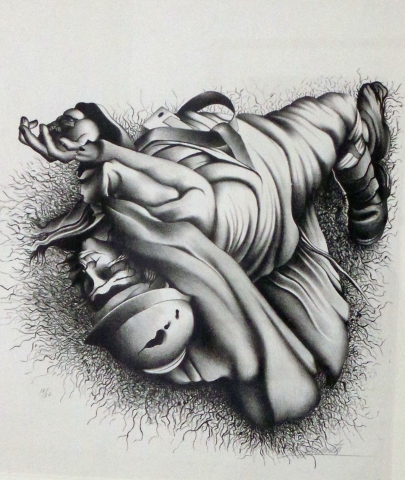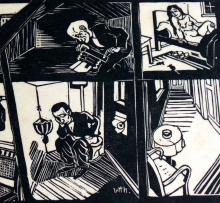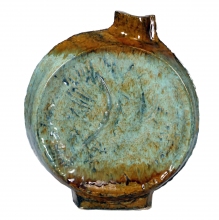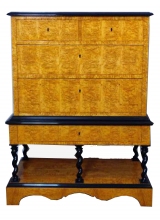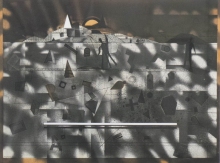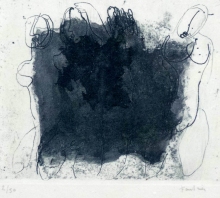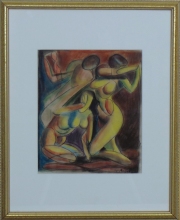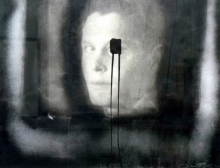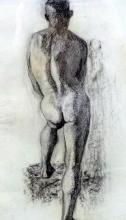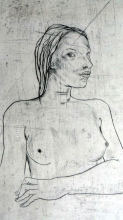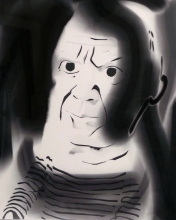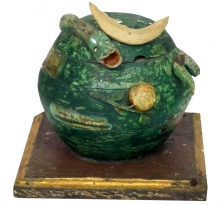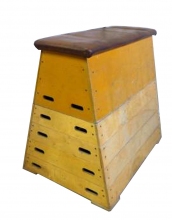"Dead Soldier: Fascism' by Francisco Dosamantes, 1940. Lithograph, excellent condition, excellent condition, archivally matted, fichly inked print. (16 1/2in H x 17in W).
"Dead Soldier: Fascism' by Francisco Dosamantes, 1940. Litoghraph, excellent condition, archivally matted and museum quality framed. (16 1/2in H x 17in W)
Francisco Dosamantes (b. October 4, 1911 - d. July 18.1986) was a Mexican artist and educator who is best known for is educational illustrations and graphic work against fascism. He was a founding member of the Taller de Gráfica Popular and the Salón de la Plástica Mexicana. Dosamantes was a politically and culturally active artist with most of his work and affiliations related to such. He was a member of the Liga de Escritores y Artistas Revolucionarios from 1934 to 1938. He was a founding member of the Taller de Gráfica Popular, serving as administrator in 1940 and remaining a member until his death except for one short hiatus.
He created posters for conferences about fascism and Nazism such as Alemania bajo bayonetas (Germany under bayonets) in 1938.[1] In 1940 he became the secretary general of the Sindicato de Maestros de Artes Plásticas. He was also a member of the Sociedad para el Impulso de las Artes Plásticas en 1948, a founding member of the Salón de la Plástica Mexicana in 1949 and a member of the Frente Nacional de Artes Plásticas from 1952.
He painted a number of murals in rural areas of Mexico generally when he was there on cultural missions. His main mural is at the former home of José María Morelos in Carácuaro, Michoacán, but there are a number at various rural schools. These were all painted between 1941 and 1946. Recognitions for his work include a silver medal at the 1929 exhibiotn "Ibero Americana" in Seville, Spain, an honorable mention at the "La Ciudad de México" exhibition in 1949, first place in lithography at the "Asamblea Nacional de Cirujanos" in 1952, a silver medal at the Salón Panamericano de Arte in Porto Alegre, Brazil in 1958 and a win at the Certamen de pintura Mexicana, organized by the Consejo Nacional de Turismo in 1962. In 1981, there was a retrospective of his work at the Salón de la Plástica Mexicana.
He was a painter, book illustrator and engraver. His painting has been described as having "clarity of thematic content, precision of line, simplification of form, and application of color."] His best known work is a series of lithographs based on the lives of rural Maya in Campeche, along with a number of politically themed graphic works. He best politically themed work is a lithograph entitled Soldado muerto (Dead soldier) from 1940 which was part of an exhibition called “La Revolución Sobre Papel: Grabados Mexicanos 1910-1960” in the British Museum in 2009. Another important lithograph from the same period is Bombardeo, España, 1937 in opposition to the rebellion by Francisco Franco against the Spanish Republic. It has elements similar to Picasso’s later piece related to the bombing of Guernica


